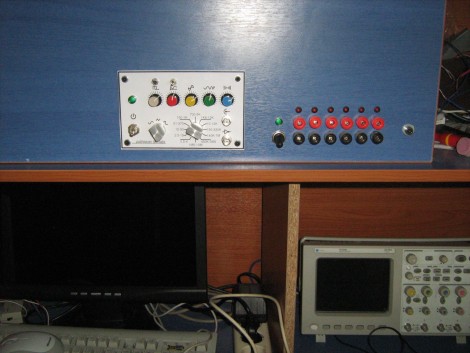
[Jay Kickliter] writes in to tell us about his open source energy/power meter. With his buddy [Frank Lynam] they designed a small device that crams into existing power boxes and uses and 8 core propeller (P8X32A) microcontroller to perform true RMS voltage and current measurements using a current transformer. [Frank] and [Jay] don’t stop there. The meter also features an xbee pro 900 MHZ to provide wireless (and even mesh networking) capabilities to the whole ordeal.
[Jay and Frank] estimate a total unit cost of around $80 (US) per prototype. With volume the price goes down by about half. With a larger number of units, and the magic of mesh networking, we could see cheaper xbee’s driving the cost down some. Check out the Google code page for details or the schematic (pdf) if you are interested.
So far the project is in the beta stages, and only features a single module sending data to a PC running an OS X Cocoa application. [Jay] is about to be otherwise occupied by the Merchant Marines and [Frank] the Navy, so they figured we could have a go at it for awhile.
We have seen other hardware used to monitor power consumption, but cramming this circuit into each power box is a neat idea.
[Frank] explains the whole project in the video after the jump.
Continue reading “Open Source Wireless Mesh Networking Energy Meter”





















